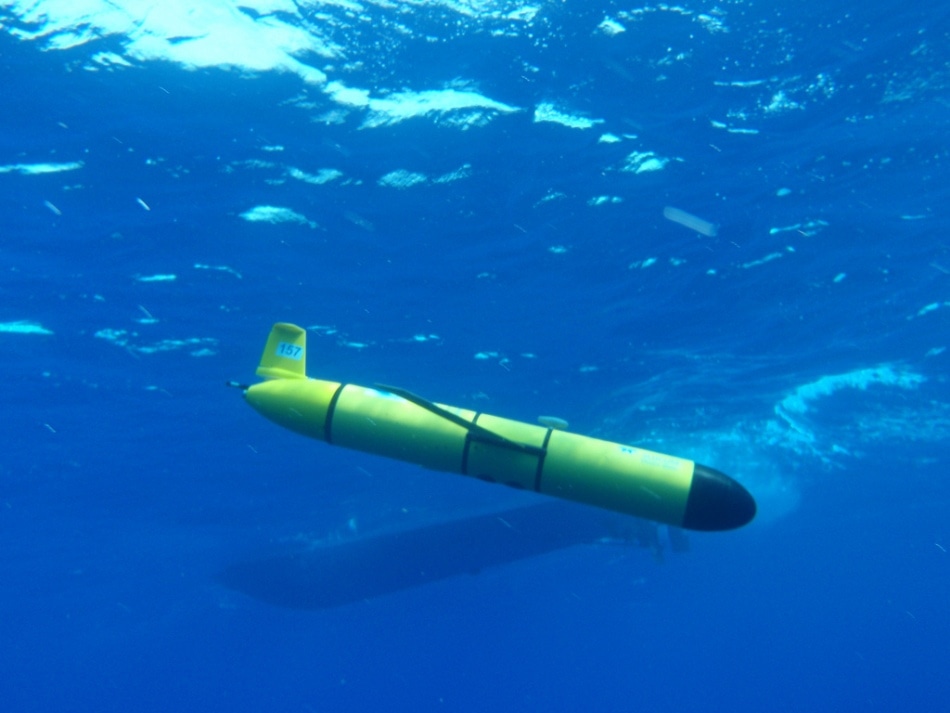Nov 22 2019
Ocean noise has been gaining more and more global attention. Scientists from Oregon State University and NOAA have devised an effective technique to employ an underwater robotic glider to measure sound levels across wider areas of the ocean.
 Image Credit: Oregon State University
Image Credit: Oregon State University
Healthy marine ecosystems need to have noise levels within particular ranges. As an analogy for humans it’s the difference between living in the country or living in the city or somewhere really loud.
Joe Haxel, Assistant Professor/Senior Research, College of Earth, Ocean, and Atmospheric Sciences, Oregon State University
Haxel, based at the Hatfield Marine Science Center in Newport, has also taken part in NOAA’s Pacific Marine Environmental Lab Acoustics program. He is the lead author of a paper published recently in the PLOS ONE journal, describing the study using the underwater robotic gliders.
The Global Ocean Observing System, a UNESCO program, recently listed ocean sound as a vital ocean variable due to its significance for marine life and seagoing humans, and because it is employed to monitor and locate everything such as nuclear explosions, earthquakes, and tsunamis.
Conventionally, researchers have used hydrophones, typically an underwater microphone, attached to a fixed mooring in the water to measure ocean sound. The disadvantage with that is they only receive data from one single location.
Although ocean sound can be measured from research ships, they are costlier to operate. They also make a lot of noise, which proves as a disturbance to fish and marine animals that are sensitive to sound.
These drawbacks can be overcome by attaching a hydrophone to a glider. This is because gliders work autonomously, are comparatively silent, and can cover hundreds of miles over a number of weeks.
Gliders fitted with hydrophones can perform repeated surveys of an area of concern for degradation of acoustic habitat, and offer real-time measurements of varying noise levels. Researchers have also successfully used gliders to measure noise from an underwater volcano, as well as to estimate surface wind speeds.
Another added advantage of gliders is that they are equipped with other instruments and sensors that offer vital measurements, such as salinity, temperature, and depth.
In the study discussed in the PLOS ONE paper, Haxel and his colleagues fixed the hydrophone to the glider measuring nearly 5 feet long and weighing around 120 pounds. The glider traveled between Gray’s Harbor, Washington and Brookings, Oregon—a distance of around 285 miles—for 18 days.
The glider worked along the North American continental shelf break, which is around 30 miles off the coast on average and is exactly where the ocean depth starts to drop more sharply. The shelf break is a major migratory path for marine animals.
As soon as the hydrophone data was retrieved, the main challenge for the researchers was to fine-tune their algorithms to filter out the noise created by the glider during operation.
Once the noise was filtered, the researchers could cross-reference the data obtained from the 18-day glider trip with historical data from hydrophones fixed to moorings along that route.
According to Haxel, it was quite shocking how closely the data sets aligned. This led the researchers to conclude that the gliders are a valuable and effective asset for measuring underwater ocean sound.
Apart from Haxel, other authors of the paper are Haru Matsumoto and T-K Andy Lau, Oregon State and NOAA Pacific Marine Environmental Laboratory in Newport; Christian Meinig and Scott Stalin, NOAA Pacific Marine Environmental Laboratory in Seattle; Gabriella Kalbach, California State University, Monterey Bay; and Robert Dziak, NOAA Pacific Marine Environmental Laboratory in Newport.